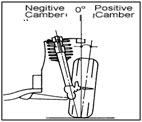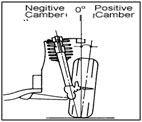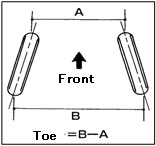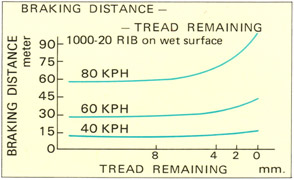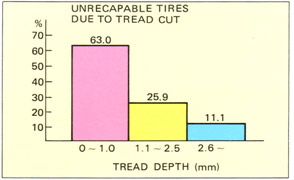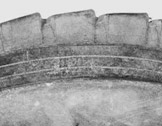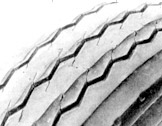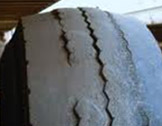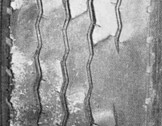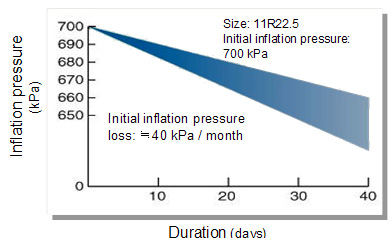Customer Attention

Tire Safety
Mounting/demounting and inflation is dangerous and number of operators are killed or injured every year.
So every step must be taken with caution.


Safety Caution
* Only specially trained persons should mount tires. Follow the RMA wall chart.
* ALWAYS match rim diameter with tire diameter.
* NEVER mount tire on a cracked, bent, rusted or otherwise damaged rim or a rim which has been repaired.
* NEVER put a flammable substance into a tire.
* ALWAYS clean and lubricate rim and tire beads.
* ALWAYS use an extension air hose with gauge and clip-on air chuck.
* ALWAYS lock wheel on tire mounting machine or place in safety cage when inflating.
* ALWAYS stand clear, and NEVER lean or reach over the tire/rim assembly when inflating.
* NEVER inflate over 40psi (275 kPa) to seat beads.
* ALWAYS adjust tire pressure to vehicle manufacturer's recommendations after beads are fully seated.
Tire Size Conversion
Tier size can be changeable under certain condition. Interchangeability is not always possible because of differences in load rating, tire dimensions, wheel well clearances, and rim size.
Be used only in pairs on the same axle, radial tires should be used only in sets of four.
Never mix tires of different sizes or construction on the same axle. When replacing conventional tire sizes with other size designations, be sure to check the car manufacturer's recommendations.



Tire and Innertube storage
<for tire>
* Store tires in a cool, clean and dry building.
* Protect tires from sunlight and mercury vapour lighting.
* Protect tires from heat sources.
* Keep tires clear of ozone-generating motors.
* Keep the facility free from dirt, dust, oil, grease, solvents, water and other damaging materials.
* Stack tires vertically on appropriate tire rack, not directly on the floors. If deformed, tires must be amended.
* To avoid deterioration, storage time must be minimized. Always observe ”°First in, First out,”± practice.
<for innertube>
* Innertubes should always be stored in a sealed enclosure.
* If the seal is damaged or broken, reseal the enclosure to prevent premature ozone crack damage on tubes.
* Exposure to weather, open door, sunlight, electric motors and fans can cause premature aging of the rubber compound, especially when folded
* Tubes stored in tires can be similarly affected if unprotected by a flap or rim.
* Always observe "First in, First out," practice.
Regular tire maintenance
Regular maintenance like daily or monthly check up of tires is very important as well as its lifetime record. It is worthwhile to pursue the performance and maintenance record of each tire to save the cost for tire and fuel.
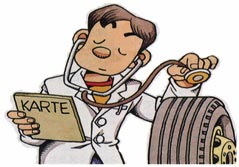

1. Tire Wear: Tread Depth and Irregular
2. Inflation Pressure
3. Damage to:
Tread: Cut, Nails and Puncture
Sidewall: Cut, Bruise and scuffing
Bead: Cut, Cracking
Wheel alignment and suspension geometry
Wheel alignment
Wheel alignment is widely known as camber, caster and toe in or toe out. if it is not properly maintained, tires are likely to face irregular wear or rapid wear problem.
|
* Camber
Camber is the inclination of the wheel from the top of the wheel, measured in degrees. If the camber is out of tolerance, it will cause tire wear on one side of the tread. Excessive
* Caste Caster is the forward or backward inclination of the kingpin in the pivot which is installed at both end of steering linkage. * Toe in/out Toe setting greatly affects tire wear. The toe is measured by the difference in the distance between the front tires and the back ones. If the toe "B-A" shown in the chart is positive, it is toe inand if the toe is negative, it is toe-out. The toe is usually set in the positive side, which means that setting is usually toe-in. It is measured in mm and set between approximately 0 to 5mm. At high toe-in or toe-out condition, the tread of outside or inside area can becompletely worn down in a typical feather edge wear pattern.
Remaining Tread Depth Remaining tread depth is deeply related to the following 2 major performances.
Tire remaining tread depth is deeply related to stopping distance of a truck when brake is applied on wet surface. There is not much difference in stopping distance worn to approximately 4 mm. However, in less than 4 mm, stopping distance dramatically increases, i.e., the shallower the remaining tread depth is, the more slippery the truck is on wet road. The graph in the left is the stopping distance for bias, but radial is basically the same.
When remaining tread depth gets shallower, which means that cushion rubber gauge under tread also gets thinner, so there is more chance to receive tread cut or chipping in service. The graph in the left shows that at least 2.5 mm is necessary to save the casing, still there is a chance to lose 11.1% of casing.
Proper inflation pressure The maintenance of inflation pressure is fundamentally important in order not only to maximize the performance of the tire but to prevent tire failure from happening. Without proper inflation a tire is no more than a chunk of rubber. Here are some tips to solve tire problems and to get the most of tires.
Irregular wear
Premature wear Heat build up Inflation pressure loss
Inflation pressure reduces approximataly 6% per month. Note! Tire inflation pressure is specified in the owner's manual or on the placard in the truck. |
SAKURA JAPAN INDUSTRIAL GROUP
TEL: 86-532-84462687
FAX: 86-532-84462689
EMAIL: info@rasakutire.com Office Address: No.2, Changjiang Middle Road, Qingdao Development Zone, China
Ā© rasakutire LIMITED 2013

